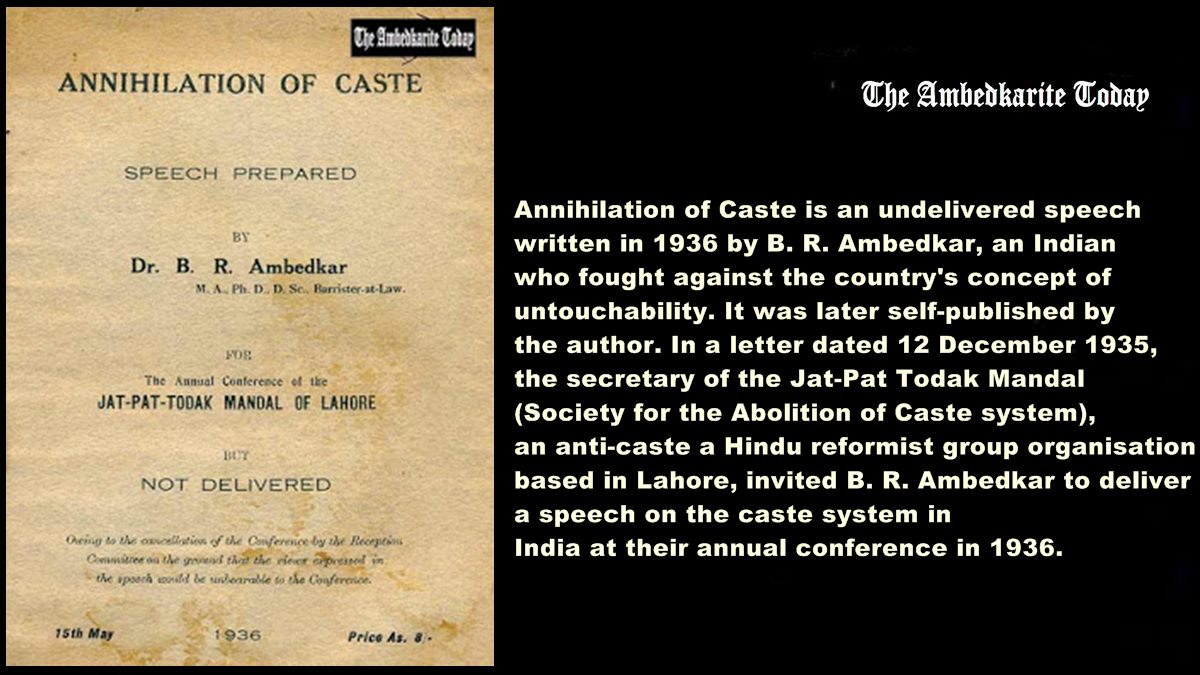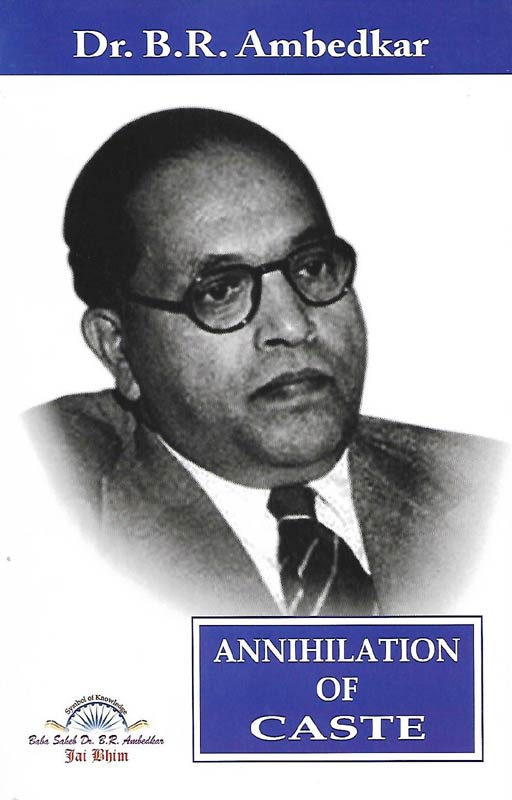

“For the 1930s, Annihilation of Caste was a case of marvellous writing with conceptual clarity and political understanding – something the world should know about. Anand’s annotations have style and perfection.” - Anand Teltumbde, author of The Persistence of Caste: The Khairlanji Murders & India’s Hidden Apartheid Arundhati Roy’s introduction is expansive and excellent.

“What Communist Manifesto is to the capitalist world, Annihilation of Caste is to caste India.

No Hindu who prizes his faith above life itself can afford to underrate the importance of this indictment.” - M.K. "synopsis" may belong to another edition of this title. Roy breathes new life into Ambedkar’s anti-caste utopia, and says that without a Dalit revolution, India will continue to be hobbled by systemic inequality. She tracks Ambedkar’s emergence as a major political figure in the national movement, and shows how his scholarship and intelligence illuminated a political struggle beset by sectarianism and obscurantism. Roy takes us to the beginning of Gandhi’s political career in South Africa, where his views on race, caste and imperialism were shaped. The hatchet was never buried.Īrundhati Roy introduces this extensively annotated edition of Annihilation of Caste in “The Doctor and the Saint ,” examining the persistence of caste in modern India, and how the conflict between Ambedkar and Gandhi continues to resonate. The world’s best-known Hindu, Mahatma Gandhi, responded publicly to the provocation. Du Bois – offers a scholarly critique of Hindu scriptures, scriptures that sanction a rigidly hierarchical and iniquitous social system. Written in 1936, it is an audacious denunciation of Hinduism and its caste system. Ambedkar’s Annihilation of Caste is one of the most important, yet neglected, works of political writing from India.

“What the Communist Manifesto is to the capitalist world, Annihilation of Caste is to India.” -Anand Teltumbde, author of The Persistence of Casteī.R.


 0 kommentar(er)
0 kommentar(er)
